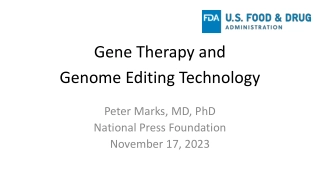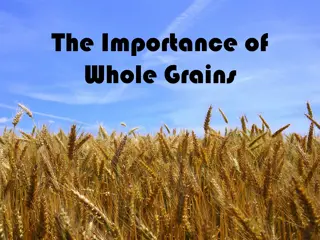Understanding Whole Genome Sequencing in Public Health Training
This training activity conducted by the New York Integrated Food Safety Center of Excellence in October 2019 focuses on educating public health staff/students on the application of Whole Genome Sequencing (WGS) and whole genome multi-locus sequence typing (wgMLST) for subtyping. Through a mock case study involving three Listeriosis cases, participants analyze WGS results to determine relatedness, with a follow-up investigating a potential foodborne source. The activity includes gene allele identification and differences assessment to enhance understanding.
Download Presentation

Please find below an Image/Link to download the presentation.
The content on the website is provided AS IS for your information and personal use only. It may not be sold, licensed, or shared on other websites without obtaining consent from the author. Download presentation by click this link. If you encounter any issues during the download, it is possible that the publisher has removed the file from their server.
E N D
Presentation Transcript
Whole Genome Sequencing Whole Genome Sequencing Training Activity Training Activity A product of the New York Integrated Food Safety Center of Excellence October 2019
Training Objective To provide public health staff or students of public health with an understanding of how whole genome sequencing (WGS), and particularly whole genome multi locus sequence typing (wgMLST), works as a subtyping method
Mock Case Study Three new cases of listeriosis were identified in County X in the last 2 weeks (historical average = 1 case/year) The three clinical L. monocytogenes isolates were sent to the State Public Health Laboratory for WGS analyisis Once analysis was complete, WGS results were reported back to the State Health Department
Question 1: Are the 3 cases WGS-related? Refer to Student Handout Complete Chart 1 For each gene, identify which allele is present in each isolate Leave Cheese column blank Complete Chart 2 Count the number of differences between each pair of isolates Leave Cheese row/column blank Activity should take approx. 15 min
Question 1: Results Chart 1. Allelic table Clinical 1 Clinical 2 Clinical 3 Cheese Allele 3 Allele 1 Allele 8 Allele 2 Allele 2 Allele 5 Allele 8 Allele 1 Allele 3 New Allele Allele 7 Allele 4 Allele 3 Allele 1 Allele 4 Allele 2 Allele 2 Allele 5 Gene 1 Gene 2 Gene 3 Gene 4 Gene 5 Gene 6 Chart 2. Allelic differences matrix Clinical 1 0 5 1 Clinical 2 5 0 5 Clinical 3 1 5 0 Cheese Clinical 1 Clinical 2 Clinical 3 Cheese
Question 1: Answer Two of the clinical isolates are WGS-related Clinical 1 Clinical 3 Clinical 2 is unrelated to the other isolates
Mock Case Study, Part 2 Upon interview, the two WGS-related cases claim having consumed soft cheese a month ago but do not remember the manufacturer They both bought the cheese from the same store Leftovers not available for testing An environmental assessment at the store determines that two brands of soft cheese are available for purchase One cheese sample from each brand was collected and sent to the State Public Health Laboratory for L. monocytogenes testing Brand A was positive for L. monocytogenes WGS was requested Once analysis was complete, WGS results were reported back to the State Health Department
Question 2: Is the cheese related to any of the three clinical isolates? Refer to Student Handout Complete Cheese column of Chart 1 Complete Cheese row/column of Chart 2 Activity should take approx. 10 min
Question 2: Results Chart 1. Allelic table Clinical 1 Clinical 2 Clinical 3 Cheese Allele 3 Allele 1 Allele 8 Allele 2 Allele 2 Allele 5 Allele 8 Allele 1 Allele 3 New Allele Allele 7 Allele 4 Allele 3 Allele 1 Allele 4 Allele 2 Allele 2 Allele 5 New Allele Allele 1 Allele 3 Allele 4 Allele 7 Allele 4 Gene 1 Gene 2 Gene 3 Gene 4 Gene 5 Gene 6 Chart 2. Allelic differences matrix Clinical 1 0 5 1 5 Clinical 2 5 0 5 2 Clinical 3 1 5 0 5 Cheese 5 2 5 0 Clinical 1 Clinical 2 Clinical 3 Cheese
Question 2: Answer Cheese isolate is WGS-related to Clinical 2 Cheese isolate is unrelated to the other isolates
Question 3: Draw a WGS tree showing the clustering of the isolates Refer to Student Handout Draw a WGS Tree (Tree 1.) Starting from the pair with fewer differences, cluster the isolates in a stepwise manner until a tree is drawn Activity should take approx. 10 min
Question 3: Answer Tree 1.























